Unboxing and mounting the new machine (ASRock DeskMini X300 + AMD Ryzen 5 5600G)
The components of the new machine arrived on 22nd December 2021. This post is about the unboxing, mounting and first impressions of the mini PC.
Unboxing
All the components arrived inside the same box.
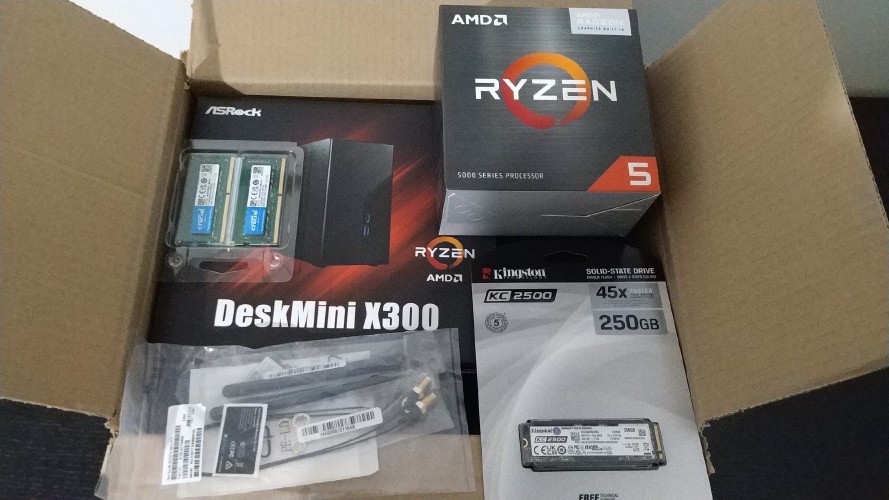
The box containing all the components
The ASRock DeskMini X300 package contained also a CPU cooler, besides the barebone mini PC and power supply.
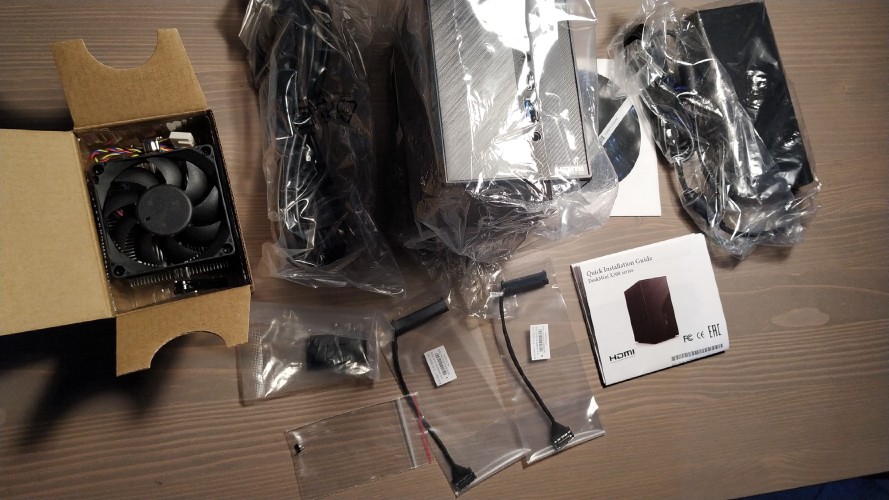
Content of the DeskMini X300 package
The Ryzen 5 5600G package contained the APU and the Wraith Stealth cooler. It was soon clear that the AMD cooler was too big to fit inside the mini PC.
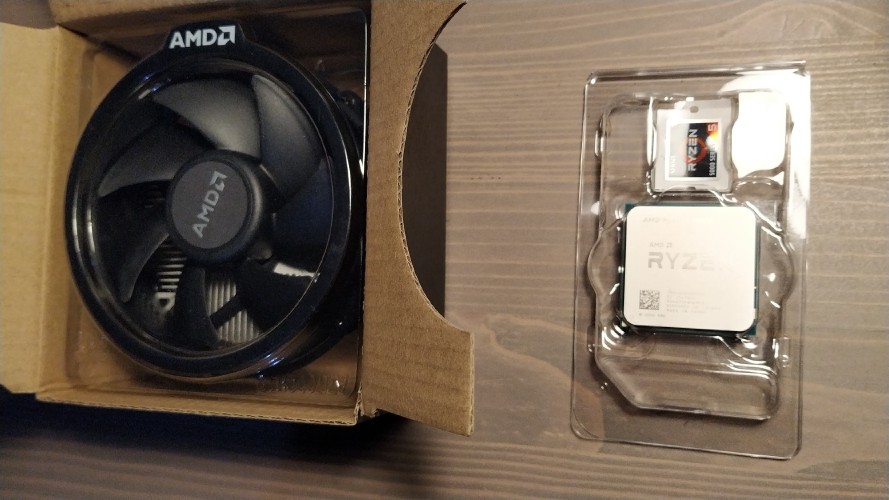
Content of the Ryzen 5 5600G package
Mounting
The first step was to mount the APU. It was quite easy even if it was the first time I did it.
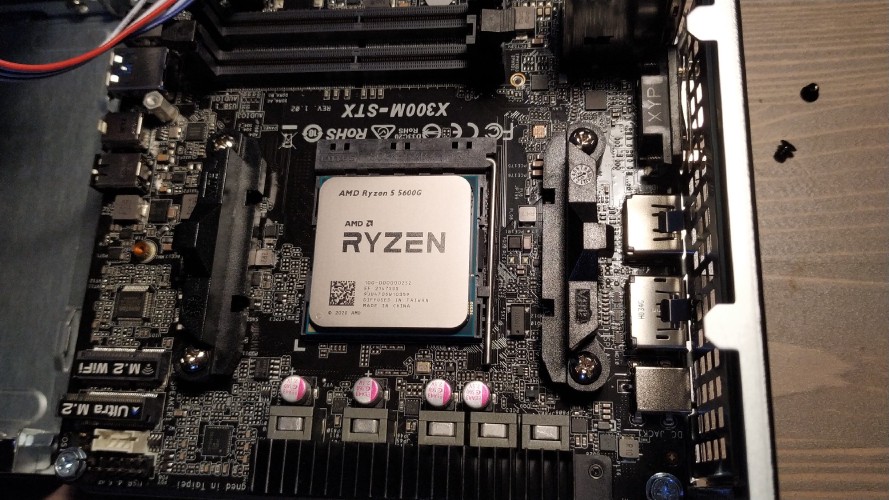
DeskMini X300 with the Ryzen 5 5600G APU mounted
Then I tried, anyway, to mount the AMD cooler but it was too high.
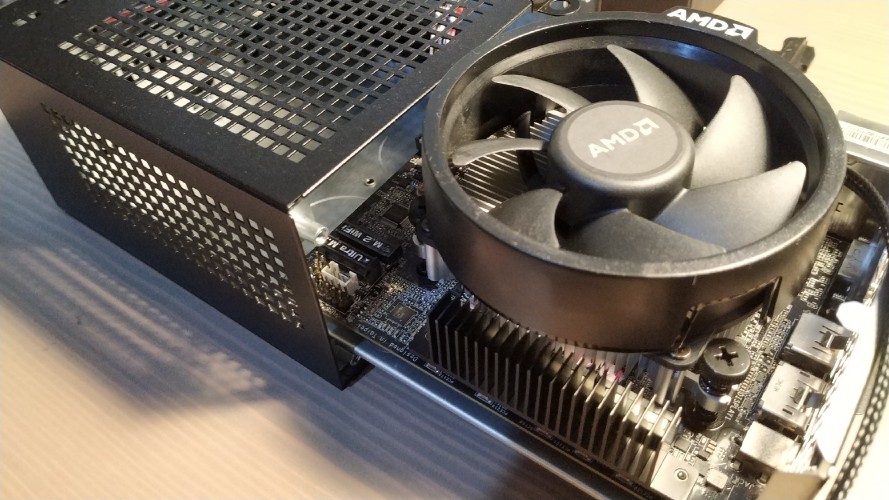
Trying to mount the Wraith Stealth
After that I mounted the ASRock cooler, the two 8 GB RAM modules and the WiFi module. The hardest part of this step was mounting the WiFi antennas cables. They are damn small and you need to push them very strongly.
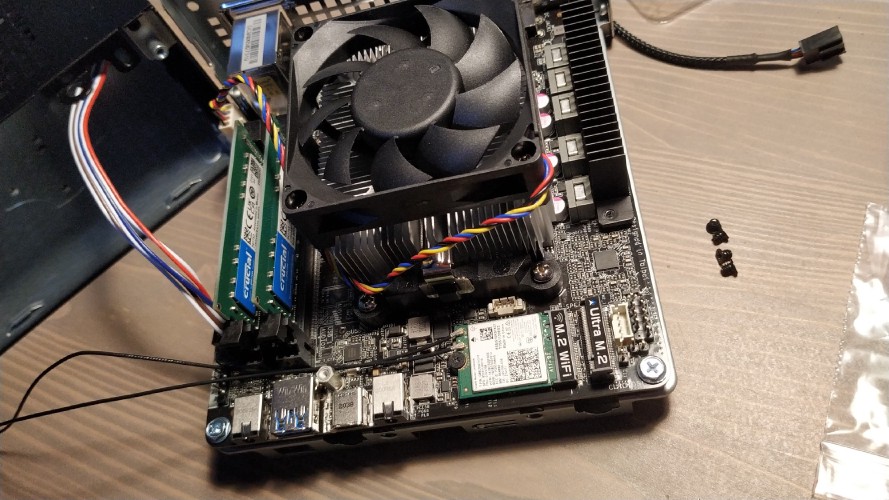
Cooler, RAM and WiFi mounted
Finally, I mounted the M.2 SSD and the WiFi antennas connectors, and closed the box with the four screws.
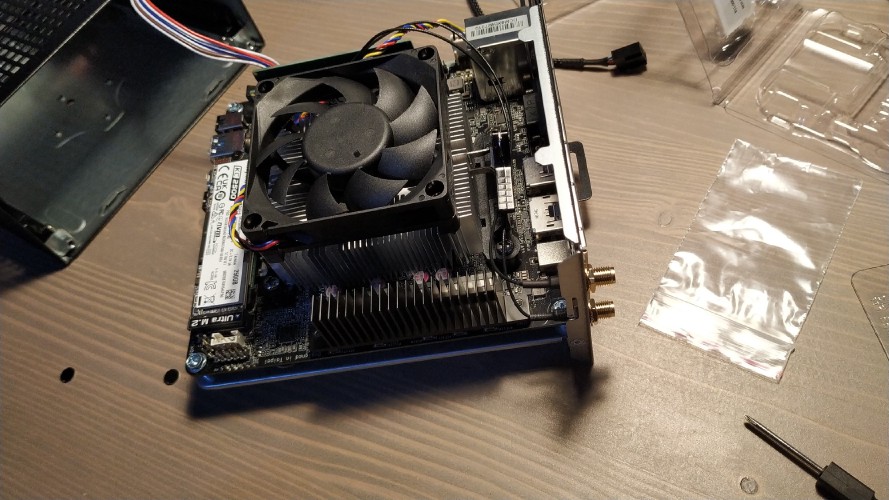
SSD and WiFi antennas connectors mounted
The mounting process was overall straightforward and I think its suitable also for beginners (like me, in the end).
First impressions
The DeskMini X300 has a very nice look in my opinion. It is raw and essential but I like it. It’s small, light and solid.
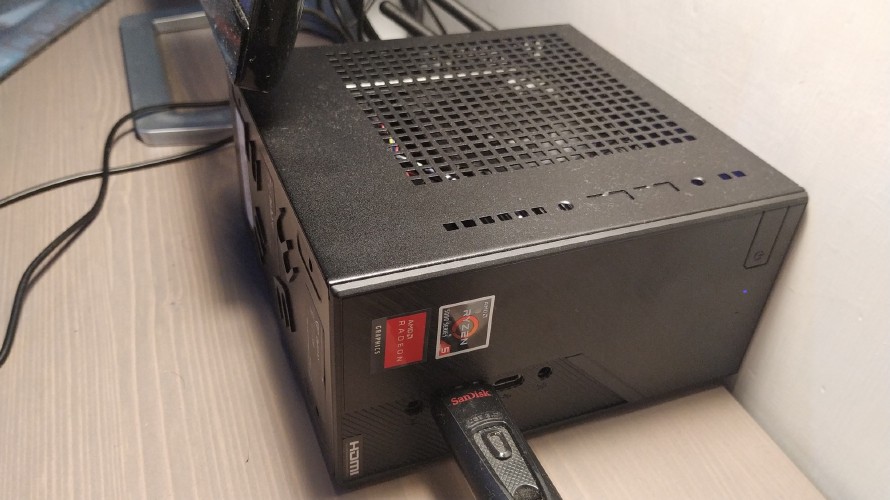
The fully mounted DeskMini X300
To test the mini PC, I used a live USB of openSUSE KDE. Fortunately, the mini PC came with the 1.70 version of BIOS preinstalled, that supports Ryzen 5000 processors (I would have been impossible to update the BIOS without an older Ryzen processor). The boot went fine, all hardware was recognized and worked. The only problem was with the cooler fan. It produced an annoying noise if the PC was in vertical position. It wasn’t the usual noise of a fan: the fan is probably faulty. Anyway, with the PC in horizontal position the noise was OK, so I decided to not return the mini PC, also because I didn’t want to disassemble it soon after having mounted it. Furthermore, I edited the fan speed settings so that the fan is at minimum speed if the CPU temperature is below 60 °C. Using this settings, the fan is barely audible while performing normal desktop operations.
I executed some CPU stress tests online to check if the cooler was able to keep the temperature under control. I don’t know if these tests are meaningful, but cooling was effective with the CPU at 100%. I’ll do some more insightful tests later.
A nice discover was the openSUSE live USB, which had persistence even if I simply wrote it with dd. I’m still using it (I’m writing this post from there), waiting to install GNU Guix. About GNU Guix, I realized the hardware I bought is not properly the most advisable. Both the integrated AMD GPU and the WiFi kit don’t work without proprietary blobs, and this sucks very much. Probably, I’ll have to use the standard Linux kernel.
That’s all for now, I’ll write about the installation of GNU Guix in the next post!